بالفعل, يلعب CNC Milling دورًا مهمًا جدًا في الصناعة التحويلية. إنها تستخدم آلات يتم التحكم فيها بواسطة الكمبيوتر والتي تدور حسب متطلبات الكمبيوتر وتقوم بعمليات قطع دوارة متعددة النقاط. تتكون الطحن باستخدام الحاسب الآلي من أدوات قطع متقدمة للغاية وتساعد على قطع المواد الزائدة من قطع العمل. لذا, في هذه المقالة, سنتعامل على وجه التحديد مع أدوات الطحن باستخدام الحاسب الآلي, الات, والعمليات التي تنطوي عليها. إلى جانب ذلك, وسوف نتناول استخدامه في الصناعات المتنوعة وبدائله في السوق.
كيف يمكنك تعريف الطحن باستخدام الحاسب الآلي?
مثل غيرها من تصنيع الصفائح المعدنية, الطحن باستخدام الحاسب الآلي له نفس القدر من الأهمية. كما يوحي اسمها, CNC يعني التحكم العددي المحوسب. لذا, إنها عملية محوسبة تتحكم في جميع أدوات القطع الخاصة بها, أي. أدوات القطع الدوارة متعددة النقاط. هذه تساعد في قطع المواد الزائدة من قطع العمل. إلى جانب ذلك, يساعد في تصميم الأجزاء والمنتجات المخصصة. هذه المنتجات لها العديد من التطبيقات في مختلف الصناعات. علاوة على ذلك, تتميز الطحن باستخدام الحاسب الآلي بالمرونة ويمكنها استخدام مواد متعددة.
ما هي آلة الطحن باستخدام الحاسب الآلي?
الآلات التي تقوم بعمليات الطحن CNC هي آلات CNC. هذه هي أدوات القطع التي تستخدم خصيصًا لقطع المواد من المعدن. تعمل المطاحن التقليدية يدويًا. في حين أن آلات الطحن CNC محوسبة. هم أكثر دقة ودقة. إلى جانب ذلك, تتحكم هذه الآلات في التصميمات ووظيفة الأداة باستخدام الكمبيوتر. هذا هو السبب, لماذا يتم الآن استخدام الطحن باستخدام الحاسب الآلي في العديد من الصناعات لتصنيع أجزاء مخصصة.
ماذا تفعل آلة طحن CNC?
بسبب التحكم المحوسب, يمكن لآلات الطحن CNC إجراء عمليات تصنيع مختلفة. وقد تشمل الحفر, قطع, والتشكيل. هنا يتم ربط قطعة العمل بالنقطة الثابتة. في حين أن أدوات القطع قابلة للدوران. ثم تدور أدوات القطع هذه حول قطعة العمل وتساعد في الحصول على الشكل والحجم المطلوب. لذا, يمكن لهذه الآلات أن تعمل في محاور متعددة الاتجاهات, أي. (X, ي, و ز). بالإضافة إلى ذلك, إذا كنت تتعامل مع تقنيات أكثر تقدما. يمكن لآلات الطحن CNC هذه أن تدور في خمسة محاور أو أكثر. توفر لهم هذه الميزة المرونة في صنع الأجزاء المصممة خصيصًا.
ما هو الفرق بetween 3 المحاور, 4-محور, وآلات الطحن 5 محاور?
يمكن تصنيف آلات طحن CNC بناءً على عدد المحاور التي تعمل بها, وكلما زادت محاور الآلة, كلما أصبح أكثر تعقيدًا وتنوعًا في إنتاج أجزاء معقدة. فيما يلي شرح مفصل للاختلافات بين المحور 3, 4-محور, وآلات الطحن 5 محاور:
1. 3-آلة طحن المحور
- أ 3-آلة طحن المحور CNC هو النوع الأكثر شيوعًا المستخدم في التصنيع ويعمل على طول ثلاثة محاور خطية: X, ي, و ز. في هذا الإعداد, يتم وضع قطعة العمل في مكانها بينما تتحرك أداة القطع على طول هذه المحاور الثلاثة لإزالة المواد من السطح.
- مزايا: 3-آلات المحور واضحة للعمل والبرنامج, وهم قادرون على إنتاج قطع غيار بأشكال هندسية أبسط وقطع دقيقة. فهي فعالة للغاية من حيث التكلفة لعمليات الطحن الأساسية, مثل ثقوب الحفر, فتحات, والخطوط البسيطة.
- محددات: في حين أن آلات المحور 3 فعالة للمهام الأساسية, إنها محدودة عندما يتعلق الأمر بميزات معقدة الآلات مثل التقشير, ملامح معقدة, أو قطع الزاوية المتعددة.
2. 4-آلة طحن المحور
- أ 4-آلة طحن المحور CNC يمتد قدرات آلة 3 محاور عن طريق إضافة محور رابع (عادة ما يكون المحور A أو الدوران حول المحور السيني). هذا يتيح أن تدوير قطعة العمل حيث يتم تصنيعها, توفير المزيد من المرونة لقطع الغيار مع ميزات على جوانب أو زوايا متعددة.
- مزايا: 4-يسمح طحن المحور بأشكال أكثر تعقيدًا, مثل أجزاء مع ثقوب, فتحات, أو الأخاديد على جوانب مختلفة. إنه يقلل من الحاجة إلى إعادة وضع قطعة العمل يدويًا, زيادة كل من الدقة والكفاءة.
- محددات: 4-آلات المحور أغلى من آلات المحور 3, وتتطلب برمجة وإعداد أكثر تعقيدًا. في حين أنها أكثر تنوعا من الآلات 3 محاور, ما زالوا لا يستطيعون التعامل مع الأشكال الهندسية المعقدة للغاية أو التخفيضات متعددة الزوايا.
3. 5-آلة طحن المحور
- أ 5-آلة طحن المحور CNC هو أكثر أنواع الآلات المتقدمة, قادرة على نقل أداة القطع أو الشغل على طول خمس محاور: X, ي, ز, أ, وب. يمكن لهذه الآلات تدوير قطعة العمل في اتجاهات متعددة, السماح بالهندسة المعقدة, ملامح عميقة, وتخفيضات لإنشاء دون الحاجة إلى إعادة وضع الجزء.
- مزايا: 5-طحن المحور مثالي للأجزاء المعقدة للغاية والمعقدة, مثل مكونات الطيران, يزرع الطبية, وشفرات التوربينات. يسمح بتعيين الآلات عالية الدقة, مرونة أكبر, والقدرة على قطع الأشكال المعقدة في عملية واحدة. بالإضافة إلى ذلك, 5-تعمل آلات المحور على تحسين التشطيبات السطحية وتقليل أوقات الدورة.
- محددات: 5-آلات المحور هي أغلى وتتطلب عواملهم المهرة العالية. البرمجة أكثر تعقيدًا, ويمكن أن يكون وقت الإعداد أطول مقارنة بآلات الطحن 3 محاور أو 4 محاور. لكن, إن قدرتهم على إنتاج قطع الغيار عالية الدقة تجعلهم استثمارًا قيمًا للصناعات التي تتطلب تصميمات معقدة.
عملية كاملة خطوة بخطوة للطحن باستخدام الحاسب الآلي
لذا, هنا هي العملية الكاملة والمفصلة لطحن CNC.
1. تصميم الجزء
يبدأ الطحن باستخدام الحاسب الآلي بتصميم الجزء المعدني. تم تصميمه بشكل عام باستخدام برنامج CAD. هنا, قمت بتضمين كافة المواصفات, أبعاد, والأشكال والملامح الهندسية في التصميم. علاوة على ذلك, إذا كنت تستخدم برنامج CAD المتقدم. إنها توفر دقة أكبر للتصميمات المعقدة وتؤدي في النهاية إلى إنشاء أجزاء معقدة. لذا, وهنا يجب على المهندسين مراعاة بعض العوامل. قد تشمل, خصائص المواد, الوصول إلى الأداة, وقيود التصنيع. هذا التصميم هو الجزء الأول الأكثر أهمية. لأنها تضمن أن الأجزاء النهائية تلبي جميع المتطلبات الوظيفية.
2. برمجة ماكينات CNC
بعد تصميم الشغل في CAD. الخطوة التالية هي استيراده إلى برنامج CAM. فهو يساعد في ترجمة تصميم CAD إلى سلسلة من التعليمات لآلة CNC. ثم يقوم بإنشاء كود بلغة البرمجة الرقمية. إنه يخبر الآلات بكيفية القطع والتحرك. إلى جانب ذلك, كما أنه يتحكم في سرعة الماكينة والمسار الذي ستقطع به. من المهم هنا تحسين مسار القطع. لذا, فإنه يمكن تقليل الوقت بالقطع ونفايات المواد. لذا, يقوم المبرمجون بضبط معلمات القطع, أي. سرعة المغزل, معدل التغذية, وعمق القطع.
3. إعداد آلات CNC
في هذه الخطوة, يقوم المهندسون بإعداد آلات CNC للتشغيل. هنا يتم تثبيت مادة الشغل بشكل مناسب مع طاولة الآلة. هذا الجدول ثابت ويتجنب الحركة أثناء المعالجة. لذا, من المهم الحفاظ على أبعاد الجزء وسلامته. علاوة على ذلك, هنا يتم تحديد أدوات القطع المثالية. ثم يقومون بتثبيته على حامل أدوات الآلة. بعد ذلك, يقوم المهندس بإجراء معايرة الآلة ووضعها عند نقاط الصفر كمرجع لجميع القياسات. يقوم المشغلون بفحص بروتوكولات السلامة والتحقق أيضًا من تكوين ماكينة CNC.
4. مرحلة التصنيع
هنا تتبع آلات CNC بدقة تعليمات البرمجة الخاصة بالمنصات. لتنفيذ هذه العملية, تبدأ أدوات القطع بالدوران بسرعة عالية جدًا. ثم يقومون بإزالة المادة تدريجياً من قطعة العمل. بعد ذلك, تصل قطعة العمل إلى الشكل والأبعاد المحددة. لذا, يتم تدوير هذه الآلات في محاور متعددة, أي. X, ي, و ز). تحتوي هذه الآلات أيضًا على بعدين إضافيين للتعامل مع الأجزاء المعقدة.
5. الانتهاء من الشغل
بمجرد قطع المادة من قطعة العمل, وعادة ما يتطلب التشطيب. يتم ذلك بشكل عام لتلبية المواصفات النهائية ومعايير الجودة. قد تتضمن هذه الخطوة إزالة الأزيز لقطع الحواف الحادة. ويتضمن أيضًا النتوءات الموجودة على يسار عملية القطع. علاوة على ذلك, ويشمل أيضًا تلميع سطح قطعة العمل. يعمل على تنعيم الجزء وزيادة خصائص السطح مثل مقاومة التآكل والصلابة. العملية المتضمنة في التشطيب هي أنودة, تلوين, أو يمكن أيضًا تطبيق الطلاء.
ما هي أنواع مختلفة من الطحن باستخدام الحاسب الآلي?
يمكن أن يكون الطحن باستخدام الحاسب الآلي من أنواع مختلفة. لذا, دعونا نناقشها بالتفصيل
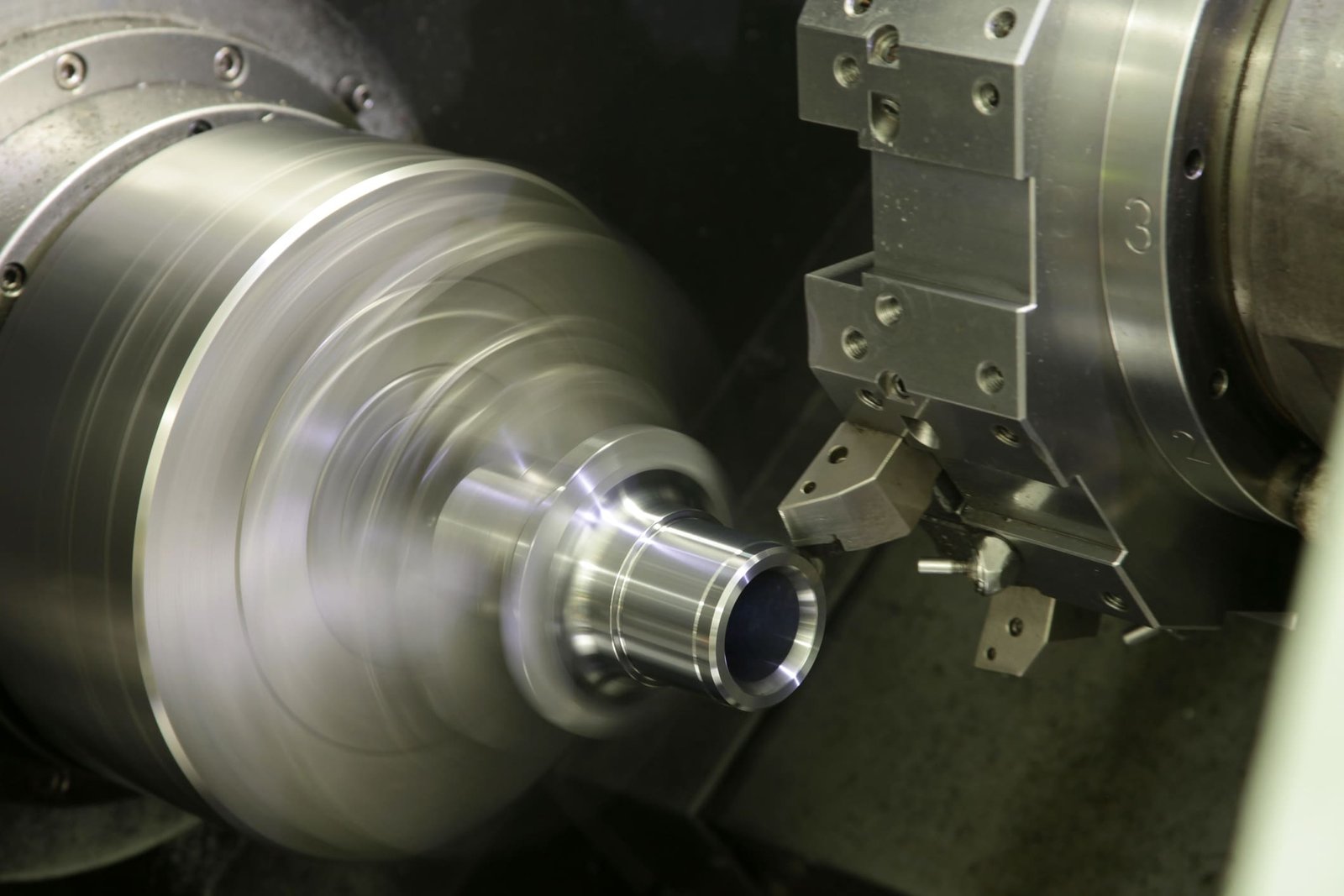
2. طحن الوجه
إنه يقطع السطح المسطح بشكل عمودي على محور القاطع. هنا الغاز القاطع حواف القطع المتعددة. هذه تتحرك حول قطعة العمل وتعطيها لمسة نهائية ناعمة. وعادة ما يتم ذلك باستخدام الآلات العمودية. لذا, يتم استخدامها على نطاق واسع في صنع الأسطح الكبيرة. وقد تشمل كتلة أو وجه جزء.
3. الطحن الزاوي
فهو يساعد في قطع الميزات المختلفة بزاوية معينة إلى المستوى الرأسي أو الأفقي لقطعة العمل. هنا يميل القاطع بزاوية ما. طاولتها دوارة لإعطاء الإعدادات الدقيقة. يتم استخدام طحن الزاوية بشكل عام في صنع الميزات المشتركة, أي. أخاديد على شكل حرف V, المفاصل تتوافق, وغيرها من الميزات الزاوية للأجزاء أو التجميعات المتشابكة.
4. طحن النموذج
إنها تستخدم قواطع ذات أشكال وتساعد في عمل خطوط ومنحنيات معقدة على قطعة العمل. هذه العملية مناسبة جدًا للأجزاء المصممة خصيصًا. لذلك, أنه يحتوي على آلات الطحن الأفقي والرأسي. لذا, يمكنه قطع الملفات الشخصية, أي. التروس, كاميرات, ومكونات العفن المعقدة. علاوة على ذلك, يتم استخدامه على نطاق واسع في الصناعات لملاءمتها المخصصة.
ما هي المواد المستخدمة في الطحن باستخدام الحاسب الآلي?
وهنا بعض المواد شائعة الاستخدام عن طريق الطحن باستخدام الحاسب الآلي. لذا, دعونا نناقشها هنا.
| نوع المادة | مواد محددة | ملكيات |
| المعادن | الألومنيوم | وزن خفيف, يمكن تشكيله |
| فُولاَذ | قوي, متين | |
| نحاس | مقاومة للتآكل, موصل | |
| نحاس | الموصلية ممتازة | |
| التيتانيوم | قوة عالية, مقاومة للتآكل | |
| البلاستيك | عضلات المعدة | قاسٍ, مقاومة الصدمة |
| البولي | مقاومة الصدمة, شفاف | |
| نايلون | ارتداء مقاومة, مقاومة كيميائية | |
| أكريليك | واضح, مقاومة الطقس | |
| المركبات | الألياف الزجاجية | نسبة القوة إلى الوزن عالية, مقاومة للتآكل |
| البوليمرات المقواة بألياف الكربون (ألياف الكربون) | نسبة القوة إلى الوزن عالية جدًا, قاسٍ | |
| خشب | الأخشاب الصلبة | متين, جمالي |
| الأخشاب اللينة | وزن خفيف, سهلة الآلة |
أنواع آلات الطحن باستخدام الحاسب الآلي
استنادا إلى الأشكال والتطبيقات المختلفة. عديد آلات الطحن باستخدام الحاسب الآلي متوفرة الآن في السوق. لذا, دعونا نناقش هذه الآلات بعمق.
1. آلات الطحن الأفقي
في مثل هذه الآلات, يتم تركيب المغزل أفقيًا ولكن بالتوازي مع طاولة العمل. يساعد هذا الإعداد بأكمله الآلات على تنفيذ عمليات الطحن عن طريق وضع قواطع على الشجرة الأفقية. لذا, هذه الآلات متوافقة للغاية للتعامل مع العمليات الثقيلة والواسعة النطاق. علاوة على ذلك, أنها توفر الاستقرار والقوة لقطع المواد الصلبة. تتمتع هذه الآلات بمعدل إزالة مرتفع ويمكنها حمل أدوات متعددة. لذا, يتم استخدامها في عمل فتحات القطع, التروس, والأشكال المعقدة.
2. آلات الطحن العمودي
تقوم آلات الطحن العمودي بتثبيت المغزل عموديًا وتدوير أداة القطع. هنا يتم وضع قطعة العمل في وضع أفقي يمكن أن يتحرك في اتجاهات مختلفة. هذه الآلات مناسبة جدًا لتصنيع أجزاء مفصلة ودقيقة. لذا, لديهم تطبيقات مختلفة في الحفر, الشق, وقطع المكونات الصغيرة والمتوسطة الحجم. إلى جانب ذلك, إنها مناسبة تمامًا للهندسة الدقيقة, النماذج الأولية, وإنتاج دفعة صغيرة.
3. 5-آلات طحن المحور
تسمح هذه الآلات بحركة أدوات القطع في خمسة محاور, معًا, أي. (X, ي, ز, أ, وب). لذا, يمكنهم صنع أجزاء معقدة بسهولة. هذا هو السبب, لديهم المزيد من المرونة ويمكنهم إنشاء أشكال متعددة في إعداد واحد فقط. هؤلاء 5-آلات المحور تستخدم الآن في تطبيقات مختلفة, أي. الفضاء الجوي, السيارات, طبي, وصناعات صنع القوالب لصنع شفرات التوربينات, يزرع العظام, والقوالب المعقدة.
4. آلات طحن السرير
هنا يتم تثبيت المغزل على شجرة دوارة ويسمح له بالتدوير. بينما طاولة العمل ثابتة. يتم استخدامها على نطاق واسع في صنع قطع العمل الكبيرة والثقيلة. يمكنهم التعامل مع الأجزاء التي تحتاج إلى دعم ثابت والحد الأدنى من الاهتزازات. لذا, هذه الآلات مستقرة وشائعة الاستخدام في صنع الأجزاء, مثل بناء السفن, بناء, وصنع كتل المحرك, الإطارات الهيكلية, والقوالب الكبيرة.
تطبيقات الطحن باستخدام الحاسب الآلي
وفيما يلي التطبيقات المختلفة لعملية الطحن باستخدام الحاسب الآلي. دعونا نناقشها بالتفصيل.
- الفضاء الجوي: ويستخدم هذا على نطاق واسع في صنع المكونات الدقيقة للطائرات والمركبات الفضائية.
- السيارات: يساعد الطحن باستخدام الحاسب الآلي في تصنيع أجزاء المحرك ومكونات ناقل الحركة.
- طبي: في القطاع الطبي, يساعد الطحن باستخدام الحاسب الآلي في صنع الأدوات الجراحية والغرسات.
- إلكترونيات: يتم استخدامه لصنع المساكن والمرفقات.
- تصنيع: الطحن باستخدام الحاسب الآلي مناسب أيضًا لصنع النماذج الأولية والأجزاء المخصصة.
فوائد وقيود الطحن باستخدام الحاسب الآلي
فيما يلي بعض مزايا وعيوب آلات الطحن CNC.
| وجه | فوائد | محددات |
| دقة | دقة عالية والتكرار | يتطلب المعايرة والصيانة المناسبة |
| براعه | تنتج أشكالًا معقدة وتفاصيل معقدة | مهارات البرمجة المتقدمة المطلوبة |
| كفاءة | إنتاج أسرع, عمل يدوي أقل | ارتفاع وقت الإعداد الأولي |
| تناسق | أجزاء متطابقة بكميات كبيرة | خطر حدوث دفعات كبيرة من العيوب في حالة حدوث أخطاء |
| المرونة | قابلة لإعادة البرمجة بسهولة لأجزاء مختلفة | مطلوب مشغلين ومبرمجين ماهرين |
| نطاق المواد | آلات مع مجموعة متنوعة من المواد | الأدوات المتخصصة اللازمة للمواد شديدة الصلابة |
| تكاليف العمالة | تقليل الحاجة إلى العمل اليدوي | ارتفاع التكاليف الأولية وتكاليف الصيانة |
| أمان | تقليل خطر الحوادث اليدوية | يتطلب بروتوكولات السلامة الصارمة |
| قابلية التوسع | مناسبة للإنتاج المنخفض والكبير | يحتاج الحجم الكبير إلى أجهزة ومساحة متعددة |
| رقابة جودة | مراقبة متقدمة للجودة | الصيانة الدورية اللازمة |
| الهندسات المعقدة | تنتج أجزاء معقدة ذات تفاوتات صارمة | أوقات معالجة أطول للأجزاء المعقدة |
| الحد من النفايات | القطع الدقيق يقلل من هدر المواد | لا تزال بعض النفايات المادية موجودة في عمليات الطرح |
ما الذي يمكن أن يحدث خطأ?
بينما يقدم طحن CNC العديد من الفوائد, هناك العديد من العوامل التي يمكن أن تخطئ أثناء عملية الطحن. يمكن أن تؤدي هذه المشكلات إلى عيوب في الجزء الأخير, زيادة التكاليف, والتأخير في الإنتاج. فيما يلي بعض المشكلات الشائعة التي قد تحدث أثناء عمليات طحن CNC:
1. أخطاء إعداد الجهاز
- يعد الإعداد غير الصحيح لآلة CNC أحد أكثر مصادر المشاكل شيوعًا. يمكن أن يشمل ذلك محاذاة غير لائقة من الشغل, اختيار الأداة غير الصحيح, أو الفشل في معايرة الجهاز بشكل صحيح. مثل هذه الأخطاء يمكن أن تؤدي إلى ضعف نتائج الآلات, مثل الأبعاد غير الدقيقة, أداة ارتداء الأداة, أو حتى تلف الجهاز.
- لتجنب هذا, من الضروري أن يكون لديك مشغل مدرب جيدًا يمكنه إعداد الجهاز والتحقق منه بعناية قبل بدء عملية الطحن.
2. قضايا المواد
- يمكن أن تؤثر جودة المواد التي يتم طحنها أيضًا على النتيجة النهائية. المواد غير الموحدة أو لديها عيوب, مثل الشقوق أو الادراج, يمكن أن تسبب مشاكل أثناء الآلات. يمكن أن تؤدي هذه العيوب إلى أجزاء أضعف, تشطيب سوء السطح, أو لا تكون ضمن المواصفات.
- يمكن أن يساعد استخدام مواد عالية الجودة وأداء فحص شامل قبل الطحن في تقليل هذه المشكلات إلى الحد الأدنى.
3. تآكل الأداة والأضرار
- يتضمن طحن CNC استخدام أدوات القطع التي يمكن أن تلبس مع مرور الوقت بسبب الاتصال المستمر مع الشغل. إذا لم يتم استبدال الأدوات أو الحفاظ عليها بانتظام, يمكن أن يؤدي إلى سوء التشطيبات السطحية, عدم دقة الأبعاد, وزيادة ارتداء الأدوات. هذا, بدوره, يمكن أن يؤدي إلى ارتفاع تكاليف الإنتاج والتأخير.
- صيانة منتظمة, تفتيش الأداة, يمكن أن يساعد اختيار الأدوات المناسب على أساس المواد التي يتم تصنيعها.
4. أخطاء البرمجة
- تعتمد طحن CNC على البرمجة الدقيقة لتنفيذ العمليات المطلوبة. إذا كان هناك خطأ في البرمجة, مثل تعليمات G-Code غير الصحيحة أو الإحداثيات غير الدقيقة, يمكن أن يؤدي إلى أجزاء لا تفي بالمواصفات. يمكن أن يشمل ذلك أجزاء كبيرة جدًا, صغير جدا, أو مع ميزات في المواقع الخاطئة.
- يمكن التحقق بدقة من اختبارات البرمجة وتشغيل المحاكاة قبل أن يساعد الطحن الفعلي في تحديد المشكلات المحتملة قبل أن تؤثر على الإنتاج.
5. ارتفاع درجة الحرارة
- تعمل آلات طحن CNC بسرعات عالية, توليد حرارة كبيرة أثناء عملية الآلات. إذا لم يتم تبريد الجهاز بشكل صحيح, يمكن أن يسبب ارتفاع درجة الحرارة, مما يؤدي إلى التوسع الحراري وعدم الدقة الأبعاد. يمكن أن يؤدي ارتفاع درجة الحرارة أيضًا إلى تسريع تآكل الأدوات وتلف المادة.
- باستخدام سائل التبريد أثناء عملية الطحن, ضمان التهوية المناسبة, يمكن أن تساعد مراقبة درجة حرارة الماكينة في تجنب المشكلات الزائدة.
6. الانتهاء من سوء السطح
- يمكن أن يحدث الانتهاء من السطح الضعيف إذا لم تكن أدوات القطع حادة بدرجة كافية, إذا كانت سرعة الآلات عالية جدًا أو منخفضة جدًا, أو إذا لم يتم دعم المادة بشكل صحيح أثناء الطحن. هذا يمكن أن يؤدي إلى خشونة, الأسطح غير المستوية أو الفراغ المفرطة التي تحتاج إلى عمل إضافي في النهاية.
- لتجنب سوء التشطيبات السطحية, من الضروري تحديد معلمات القطع الصحيحة, استخدم الأدوات المناسبة, والتأكد من تثبيت الشغل بشكل آمن.
7. مشاكل الأدوات والمبنى
- يمكن أن تؤدي الأدوات والتركيبات المستخدمة لعقد قطعة العمل في مكانها أثناء طحن CNC أيضًا إلى مشاكل. إذا لم يتم تثبيت قطعة العمل بشكل آمن, قد يتحول أثناء عملية الآلات, مما أدى إلى أجزاء بأبعاد غير متسقة. بصورة مماثلة, يمكن أن تؤدي الأدوات غير الصحيحة أو البالية إلى تخفيضات سيئة وارتداء الأدوات المفرطة.
- يمكن أن تساعد في تقليل هذه المشكلات في تقليل هذه المشكلات إلى الحد الأدنى لضمان تصميم لاعبا اساسيا واستخدام الأدوات المناسبة لكل وظيفة.
عمليات بديلة لعمليات الطحن
في حين أن طحن CNC هو أحد أكثر الطرق شعبية لقطع الغيار, هناك العديد من العمليات البديلة التي يمكن استخدامها اعتمادًا على المتطلبات المحددة للجزء والمادة. غالبًا ما يتم اختيار هذه العمليات البديلة لمزاياها الفريدة في بعض التطبيقات:
1. تحول باستخدام الحاسب الآلي
يتم استخدام تشغيل CNC لإنشاء أجزاء أسطواني أو مخروطي عن طريق تدوير الشغل مقابل أداة قطع ثابتة. إنه مثالي للأجزاء التي لها تناظر دوراني, مثل مهاوي, البراغي, والتجهيزات. عادة ما يكون تحول CNC أسرع من طحن CNC وهو فعال بشكل خاص لإنتاج الأجزاء المستديرة ذات الحجم الكبير.
2. القطع بالليزر
يستخدم قطع الليزر شعاع ليزر مركزة لقطع المواد بدقة عالية. إنه مفيد بشكل خاص لقطع المواد الرقيقة مثل الصفائح المعدنية, البلاستيك, والخشب. يوفر قطع الليزر حواف عالية الجودة وهو فعال للغاية لكل من الأشكال الهندسية البسيطة والمعقدة, لكنها تقتصر بشكل عام على مواد أرق مقارنة بطحن CNC.
3. القطع بنفث الماء
يستخدم قطع المياه مجرى ماء عالي الضغط (غالبًا ما يتم خلطها مع جزيئات جلخ) لقطع المواد. إنها مثالية للمواد التي لا يمكنها تحمل الحرارة الناتجة عن قطع الليزر أو البلازما, مثل المركبات, السيراميك, والمعادن الحساسة. يوفر قطع WaterJet دقة عالية ويمكن استخدامه على مجموعة واسعة من المواد, بما في ذلك المعادن, البلاستيك, والحجر.
4. معالجة التفريغ الكهربائي (موسيقى الرقص الإلكترونية)
EDM هي عملية تصنيع دقيقة تستخدم التصريفات الكهربائية (الشرر) لإزالة المواد من الشغل. هذه العملية مثالية لإنشاء أشكال معقدة وتفاصيل دقيقة في مواد صلبة أو صعبة مثل فولاذ الأدوات والكربيد. يستخدم EDM على نطاق واسع لإنشاء القوالب, يموت, والأجزاء ذات الأشكال الهندسية المعقدة التي يصعب تحقيقها من خلال طرق الآلات التقليدية.
5. 3د الطباعة (التصنيع المضافة)
3الطباعة د, أو التصنيع المضافة, هي عملية تبني طبقة أجزاء تلو الأخرى باستخدام مواد مثل البلاستيك, معدن, أو السيراميك. إنه مفيد بشكل خاص لإنتاج النماذج الأولية, أجزاء منخفضة الحجم, والأجزاء ذات الأشكال الهندسية المعقدة التي سيكون من الصعب أو المستحيل استخدام الآلة باستخدام طحن CNC. 3الطباعة D هي أيضًا أكثر فعالية من حيث التكلفة للتشغيلات الصغيرة في الإنتاج وتقلل من نفايات المواد مقارنة بالعمليات الطرفية.
6. الختم واللكم
ختم واللكم هي العمليات التي يستخدم فيها الموت لقطع, شكل, أو المواد النموذجية. هذه العمليات هي الأكثر شيوعًا للصفائح المعدنية وفعالة لإنتاج كميات كبيرة من الأجزاء. تكون الختم واللكم بشكل عام أسرع وأكثر فعالية من حيث التكلفة من طحن CNC عند التعامل مع المواد الرقيقة والأشكال البسيطة.
7. صب
صب ينطوي على صب المواد السائلة (عادة المعدن أو البلاستيك) في قالب لإنشاء جزء. غالبًا ما تستخدم هذه العملية لإنتاج أجزاء ذات أشكال معقدة يصعب صياغتها. يمكن أن يكون الصب بديلاً فعالًا من حيث التكلفة لطحن CNC للإنتاج ذو الحجم العالي, خاصة بالنسبة للأجزاء المصنوعة من مواد مثل الألومنيوم, حديد, أو البرونز.
طحن CNC مقابل الدوران CNC
بينما كلاهما الطحن باستخدام الحاسب الآلي و تحول باستخدام الحاسب الآلي هي عمليات التصنيع الطرفية التي تنطوي على إزالة المواد من قطعة العمل لإنشاء جزء نهائي, إنها مختلفة في تشغيلها وتطبيقاتها المناسبة. إليك مقارنة بين كلتا الطريقتين:
1. الطحن باستخدام الحاسب الآلي
- عملية: يتضمن طحن CNC استخدام أداة قطع دوارة تتحرك على طول محاور متعددة لإزالة المواد من قطعة عمل ثابتة. يتم نقل أداة الآلة في اتجاهات مختلفة (عادة 3, 4, أو 5 محاور) لتشكيل الجزء. طحن CNC متعدد الاستخدامات للغاية ويمكن استخدامه لإنتاج مجموعة واسعة من الأشكال, بما في ذلك الأسطح المسطحة, ملامح, ثقوب, والأشكال ثلاثية الأبعاد المعقدة.
- التطبيقات: يستخدم طحن CNC لصنع أجزاء بأشكال غير منتظمة, الهندسة المعقدة, والأجزاء التي تتطلب ميزات متعددة أو جيوب عميقة. إنه مناسب لإنتاج المكونات ذات المعالم المعقدة, الوجوه, ثقوب, أو الميزات ثلاثية الأبعاد, كما هو الحال في الصناعات مثل الفضاء, السيارات, والأجهزة الطبية.
- مزايا:
- القدرة على إنشاء أشكال معقدة وميزات ثلاثية الأبعاد.
- التنوع للعمل مع مجموعة واسعة من المواد (المعادن, البلاستيك, المركبات).
- يمكن استخدامها لكل من النموذج الأولي والإنتاج عالي الحجم.
- محددات:
- أبطأ نسبيا من الدوران عند تصنيع الأجزاء الأسطوانية.
- قد تتطلب إعدادات أكثر تعقيدًا لبعض الأشكال الهندسية.
2. تحول باستخدام الحاسب الآلي
- عملية: يتضمن تحول CNC تدوير قطعة العمل بينما تقوم أداة القطع الثابتة بإزالة المواد منه. يتم عقد قطعة العمل في تشاك أو لاعبا اساسيا وتناوب على طول محورها, مع تتحرك أداة القطع على طول محاور X و Z لتشكيل الجزء. يشيع استخدام تحول CNC لإنتاج أسطوانية, مخروطي, أو الأجزاء الكروية مع التماثل الدوراني.
- التطبيقات: يعد تحول CNC مثاليًا لإنشاء جولة, أسطواني, أو أجزاء متماثلة, مثل مهاوي, البطانات, والمكونات الخيوط. يتم استخدامه عادة لقطع الغيار ذات درجة عالية من التماثل الدوراني أو الأشكال الهندسية البسيطة, في كثير من الأحيان ينظر إليها في الصناعات مثل السيارات, بالقطع, والإلكترونيات.
- مزايا:
- عالية الكفاءة لإنشاء أجزاء أسطوانية.
- إزالة المواد أسرع للأجزاء المستديرة مقارنة بالطحن.
- يمكن أن تنتج أجزاء بدقة عالية وسلس.
- محددات:
- يقتصر على الأجزاء ذات التماثل الدوراني.
- أقل مرونة في إنشاء أشكال ثلاثية الأبعاد معقدة أو ميزات غير منتظمة.
ملخص الاختلافات
| ميزة | الطحن باستخدام الحاسب الآلي | تحول باستخدام الحاسب الآلي |
| حركة | يتحرك القاطع الدوار على محاور متعددة (X, ي, ز, أ, ب) | تدور الشغل; يتحرك القاطع على طول محاور X و Z |
| التطبيقات | الأشكال المعقدة, 3ميزات D., أسطح مسطحة أو محددة | دائري, أسطواني, أو أجزاء متماثلة |
| سرعة | أبطأ للأجزاء الأسطوبية | أسرع للأجزاء المستديرة |
| المرونة | عالي; يمكن إنشاء أجزاء ثلاثية الأبعاد معقدة | يقتصر على الأجزاء المتماثلة بالتناوب |
| مواد مشتركة | المعادن, البلاستيك, المركبات | المعادن, البلاستيك |
كم تكلفة الطحن باستخدام الحاسب الآلي?
الصناعات المختلفة تقدم أسعارًا مختلفة. ولكن فيما يلي بعض التكاليف المقدرة التي يمكن أن تساعدك على فهم خيارات الميزانية المتاحة في السوق.
| عامل التكلفة | وصف | النطاق النموذجي |
| وقت الآلة | سعر الساعة لاستخدام ماكينة CNC | $50 - $200 في الساعة |
| إعداد التكاليف | الإعداد الأولي ومعايرة الجهاز | $100 - $500 لكل الإعداد |
| تكاليف الأدوات | تكلفة أدوات القطع والتركيبات | $20 - $100+ لكل أداة |
| تكاليف المواد | تكلفة المواد الخام | يختلف على نطاق واسع على أساس المواد |
| تكاليف البرمجة | تكلفة إنشاء برامج CNC (رمز G) | $50 - $100 في الساعة |
| تكاليف التشطيب | عمليات إضافية مثل إزالة الأزيز, طلاء | $10 - $50 لكل جزء |
مستقبل طحن CNC
1. الأتمتة والروبوتات
الأتمتة في طحن CNC تتوسع إلى ما وراء تشغيل الماكينة التقليدية. الأسلحة الآلية و مغيرات الأدوات الآلية يتم دمجها في أنظمة CNC, السماح بخطوط الإنتاج الآلية بالكامل التي تعمل 24/7. هذا يقلل من تكاليف العمالة, يسرع الإنتاج, ويزيد من الدقة, خاصة في التصنيع ذو الحجم العالي. يتم استخدام الروبوتات أيضًا لمعالجة الأجزاء وفحص الجودة, مزيد من تعزيز كفاءة سير العمل.
2. 3D الطباعة والتصنيع الهجين
مزيج من طحن CNC والطباعة ثلاثية الأبعاد يظهر كحل تصنيع هجين. تتيح هذه العملية الهجينة للمصنعين استخدام الطباعة ثلاثية الأبعاد للميزات المضافة (مثل الهياكل الداخلية المعقدة) وطحن CNC للتصنيع الطري للميزات الخارجية الدقيقة. لا يقلل هذا النهج من نفايات المواد فحسب ، بل يعمل أيضًا على تحسين مرونة وتعقيد الأجزاء التي يمكن إنتاجها.
3. طحن CNC القائم على السحابة
طحن CNC القائم على السحابة تحدث ثورة في الصناعة من خلال السماح للمصنعين بالتحكم. هذا يتيح المراقبة في الوقت الفعلي, التشخيص, وتحديثات البرامج من أي مكان. تسهل المنصات السحابية أيضًا تعاون بين المهندسين والمصممين, تحسين سير عمل التصميم إلى الإنتاج. بالإضافة إلى, تتيح الأنظمة المستندة إلى مجموعة النظراء تخزين وتحليل بيانات أفضل, تعزيز تحسين العملية وصنع القرار.
4. الاستدامة وكفاءة الطاقة
كما تركز الصناعات أكثر على الاستدامة, تم تصميم آلات طحن CNC المستقبلية لتكون أكثر فعال الطاقة وصديقة للبيئة. تشمل الابتكارات تحسين أنظمة التبريد, مواد قابلة لإعادة التدوير, والميزات الموفرة للطاقة تقلل من استهلاك الطاقة. بالإضافة إلى ذلك, سيساعد الحد من نفايات المواد من خلال الآلات الدقيقة وإدارة الأدوات والحياة الأفضل للشركات على تحقيق أهداف الاستدامة.
5. زيادة الدقة والتصنيع الدقيق
كما تتطلب الصناعات دقة أعلى و التصنيع الجزئي القدرات, طحن CNC يتطور لتلبية هذه الاحتياجات. استخدام Micro-Machining ستسمح التقنيات بإنتاج مكونات صغيرة ومفصلة للغاية, مثل تلك المستخدمة في الإلكترونيات, أجهزة طبية, والتطبيقات الفضائية. ستمكن هذه الابتكارات من إنشاء أجزاء مع التحمل المقاس بالميكرون, تحقيق مستويات غير مسبوقة من الدقة.
ماذا سسيكون جonsidered دبليودجاجة ججرعات CNC ممرض مanufactor?
عند اختيار أ CNC Milling الشركة المصنعة, يجب أخذ العديد من العوامل المهمة في الاعتبار لضمان تلبية الشركة المصنعة احتياجاتك ومتطلباتك المحددة. فيما يلي اعتبارات رئيسية للمساعدة في توجيه قرارك:
-
الخبرة والخبرة
الشركة المصنعة خبرة و خبرة في طحن CNC أمر بالغ الأهمية. من المهم اختيار شركة تصنيع ذات سجل حافل في إنتاج أنواع الأجزاء التي تحتاجها. تأكد من أن لديهم خبرة في الصناعات أو المواد المحددة ذات الصلة بمشروعك, سواء كان الفضاء, السيارات, طبي, أو قطاع آخر. سيؤثر فهم خصائص المواد وتقنيات الآلات على جودة ودقة الأجزاء التي تنتجها.
-
التكنولوجيا والمعدات
يجب أن تتمتع الشركة المصنعة ذات الطحن CNC الأعلى بالوصول إلى أحدثها آلات CNC و التكنولوجيا المتطورة. قدرات الآلات, مثل عدد المحاور (3-محور, 4-محور, أو 5 محاور), وسيؤثر نوع الأدوات التي يستخدمونها على تعقيد ودقة الأجزاء المنتجة. تأكد من أن الشركة المصنعة تستخدم آلات متقدمة يمكنها التعامل مع المتطلبات المحددة لمشروعك, خاصة إذا كنت بحاجة إلى دقة عالية أو تعمل مع الهندسة المعقدة.
-
مراقبة الجودة والدقة
ضبط الجودة ضروري في طحن CNC. يجب أن يكون لدى الشركة المصنعة عمليات ضمان جودة صارمة لضمان أن كل جزء ينتج عنه يفي بمواصفاتك. وهذا يشمل استخدام أدوات القياس المعايرة, التفتيش في مراحل مختلفة من الإنتاج, والالتزام بمعايير الصناعة. تأكد من الاستفسار عن الشركة المصنعة مستويات التسامح وقدرتهم على تلبية الدقة المطلوبة.
-
وقت التحول
التوقيت هو عامل حاسم في العديد من الصناعات. ناقش مع الشركة المصنعة أوقات الرصاص لمشاريع طحن CNC, والتأكد من أن يتمكنوا من تلبية المواعيد النهائية لإنتاجك. يجب أن تزودك الشركة المصنعة الموثوقة بجداول توصيل دقيقة وأن تكون شفافًا بشأن قدرتها على التعامل مع الطلبات العاجلة إذا لزم الأمر.
-
التخصيص والمرونة
قد يتطلب مشروعك حلول مخصصة, لذلك من الضروري اختيار الشركة المصنعة التي توفر المرونة في خدماتها. قد يشمل ذلك القدرة على العمل مع مجموعة من المواد, عرض تطوير النموذج الأولي, أو استيعاب التغييرات على التصميمات. يجب أن تكون الشركة المصنعة الجيدة للطحن CNC قادرة على التكيف مع احتياجاتك المحددة والمساعدة في تحسين التصميمات للتصنيع.
-
هيكل التكلفة والتسعير
تختلف تكلفة طحن CNC اعتمادًا على عوامل مثل المواد, تعقيد, والكمية. من المهم الحصول على ملف فهم واضح لهيكل تسعير الشركة المصنعة. اطلب عروض أسعار مفصلة وفكر فيما إذا كان السعر مبررًا من خلال الجودة والخدمة المقدمة. قارن الأسعار من العديد من الشركات المصنعة, لكن لا تجعل التكلفة العامل الحاسم الوحيد. أحيانا, يمكن أن تؤدي التكاليف الأعلى المقدمة إلى نتائج ومدخرات طويلة الأجل أفضل بسبب تحسين الجودة وأوقات الإنتاج بشكل أسرع.
-
دعم العملاء والتواصل
فعال تواصل و دعم العملاء أمر حيوي طوال عملية طحن CNC. يجب على الشركة المصنعة توفير اتصال واضح وفي الوقت المناسب, إبقائك محدثًا على تقدم مشروعك. يجب أن يكونوا مستجيبين أيضًا لاستفساراتك وتقديم الدعم في حالة ظهور أي مشكلات أثناء عملية الإنتاج.
لماذا تختار القمم للطحن باستخدام الحاسب الآلي?
قمم هي صناعة رئيسية, تقديم أنواع مختلفة من عمليات الطحن. تم تجهيز منشأتنا بآلات طحن CNC مختلفة. يمكننا تنفيذ عمليات الطحن المختلفة في وقت أقل. إلى جانب ذلك, لدينا فريق عمل ومهندسون خبراء يساعدوننا في تصنيع أجزاء دقيقة وعالية الدقة بكميات كبيرة. لذا, إذا كنت تبحث عن خدمات طحن CNC متخصصة. نحن هنا لخدمتك بكل الطرق الممكنة. احصل على الاقتباس الخاص بك اليوم.
خاتمة
ختاماً, يعد الطحن باستخدام الحاسب الآلي طريقة فريدة ودقيقة لتصنيع قطع العمل المختلفة. فهو يساعد على إزالة المواد الزائدة المرتبطة بالجزء المعدني ويعطي لمسة نهائية ناعمة. إلى جانب ذلك, إنها عملية مهمة لمختلف الصناعات, أي. السيارات, الفضاء الجوي, بناء, والإلكترونيات. لذا, الطحن باستخدام الحاسب الآلي قادر ومفيد لصنع النماذج الأولية والإنتاج بكميات كبيرة.
أسئلة مكررة
س1. كيف يمكنك التمييز بين الطحن باستخدام الحاسب الآلي و تحول باستخدام الحاسب الآلي?
على الرغم من أن كلتا العمليتين تساعدان في قطع المواد الزائدة. لكن لديهم إعدادات مختلفة. يحتوي الطحن باستخدام الحاسب الآلي على أدوات قطع دوارة تقطع المواد. تحول باستخدام الحاسب الآلي لديه أدوات قطع ثابتة ويقومون بقطع الشغل الدوار باستخدام مخرطة.
Q2. ما هي المواد التي تدعمها آلات طحن CNC?
يمكن لهذه الآلات العمل بمواد مختلفة, أي. المعادن, البلاستيك, المركبات, والخشب.
س3. ما مدى دقة آلات الطحن باستخدام الحاسب الآلي?
هذه الآلات دقيقة للغاية ودقيقة. يمكنهم تحقيق الدقة في حدود الميكرومتر. لذا, يعتمد ذلك على إمكانيات الماكينة والمواد التي تستخدمها.
س 4. ما هو الفرق بين الطرق الإرشادية والانزلاق?
الاختلافات الرئيسية بين الطرق الإرشادية والانزلاق تكمن في الدقة, التعقيد الهيكلي, مجالات التطبيق, وقدرة الحمل. Guideways أكثر ملاءمة لاتخاذ القرار العالي, تطبيقات عالية التحميل والتي توجد عادة في آلات CNC المتقدمة, بينما يتم استخدام الانزلاق بشكل أبسط, تطبيقات أخف وزنا حيث التكلفة عامل رئيسي.
س5. هل هناك الكثير من الرياضيات في تصنيع CNC?
نعم, هناك قدر لا بأس به من الرياضيات المشاركة في CNC (التحكم العددي بالكمبيوتر) بالقطع. بينما يتم التحكم في جهاز CNC نفسه بواسطة برنامج يتم أتمتة العديد من جوانب عملية الآلات, يعد فهم الرياضيات وتطبيقها ضروريًا لمختلف مراحل تصنيع CNC, مثل التصميم, برمجة, يثبت, واستكشاف الأخطاء وإصلاحها.
س6. ما مدى صعوبة تعلم طحن CNC?
يمكن أن يختلف تعلم طحن CNC في الصعوبة اعتمادًا على معرفتك السابقة وعمق الخبرة التي تريد تحقيقها. لكن, مثل العديد من المهارات الفنية, مع الموارد والممارسة المناسبة, يمكن تعلم طحن CNC خطوة بخطوة.

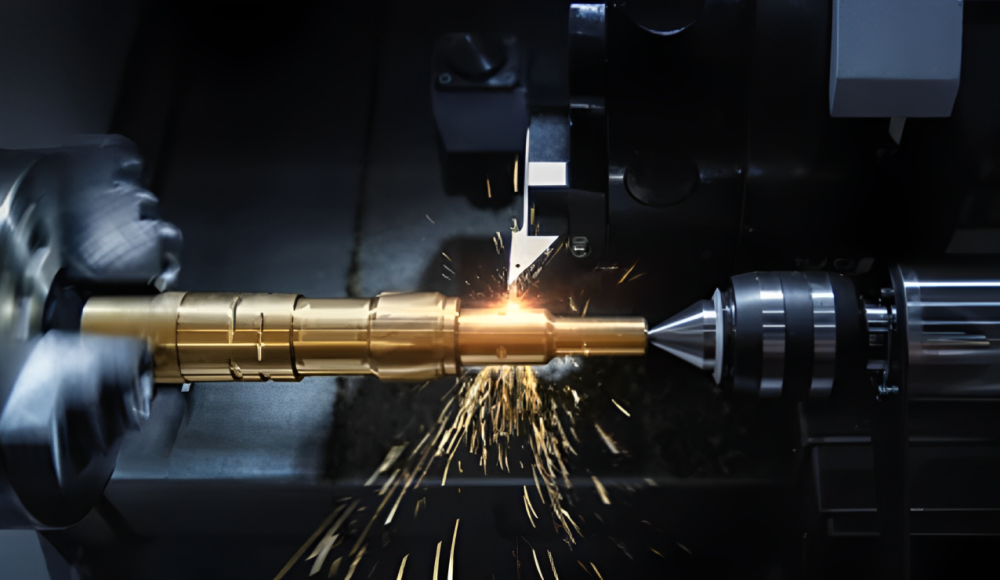
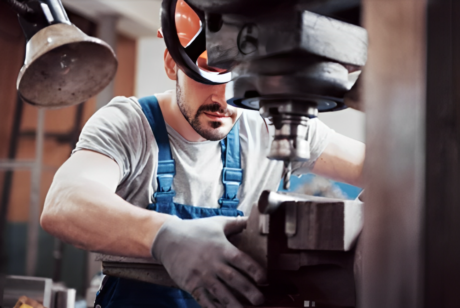


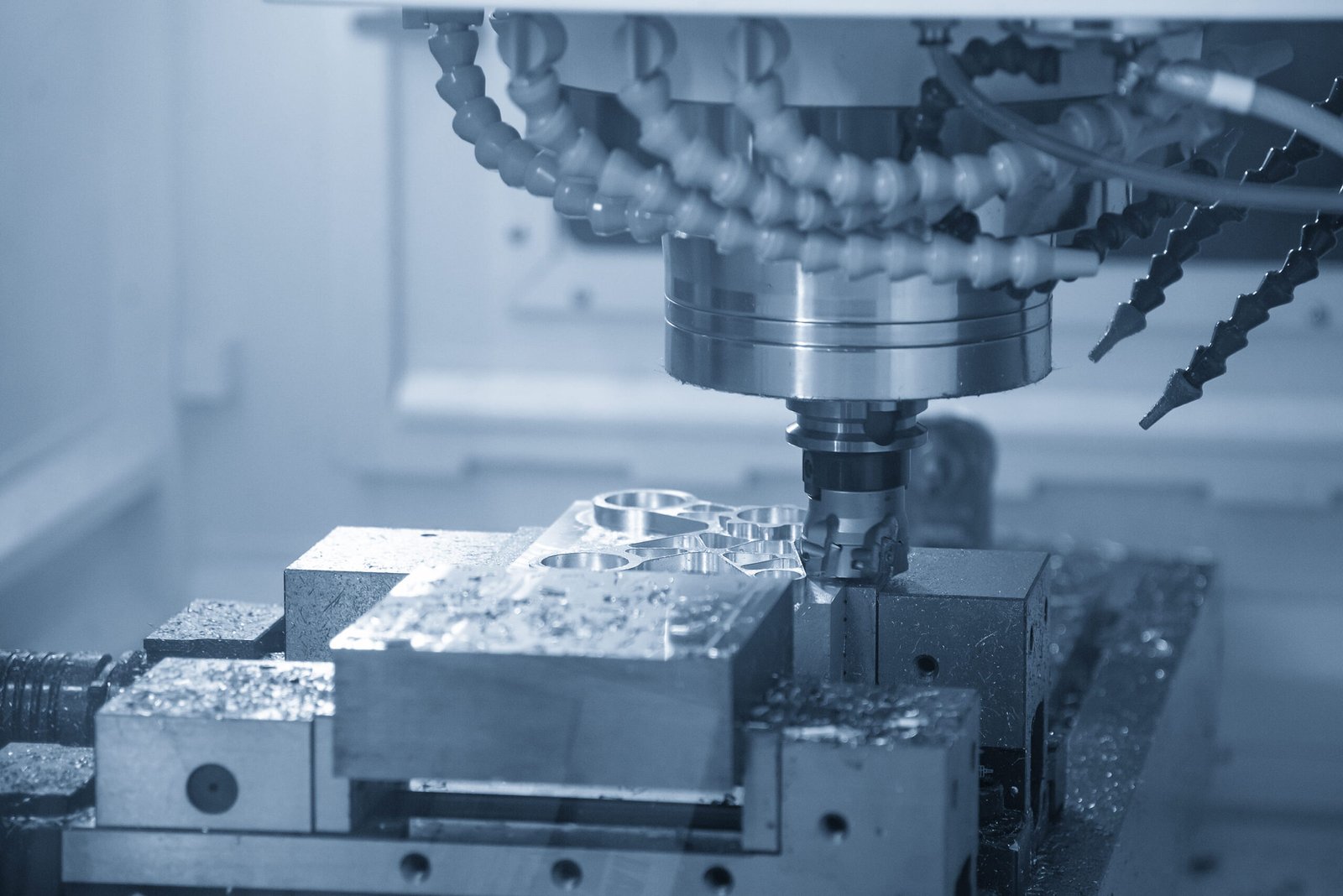
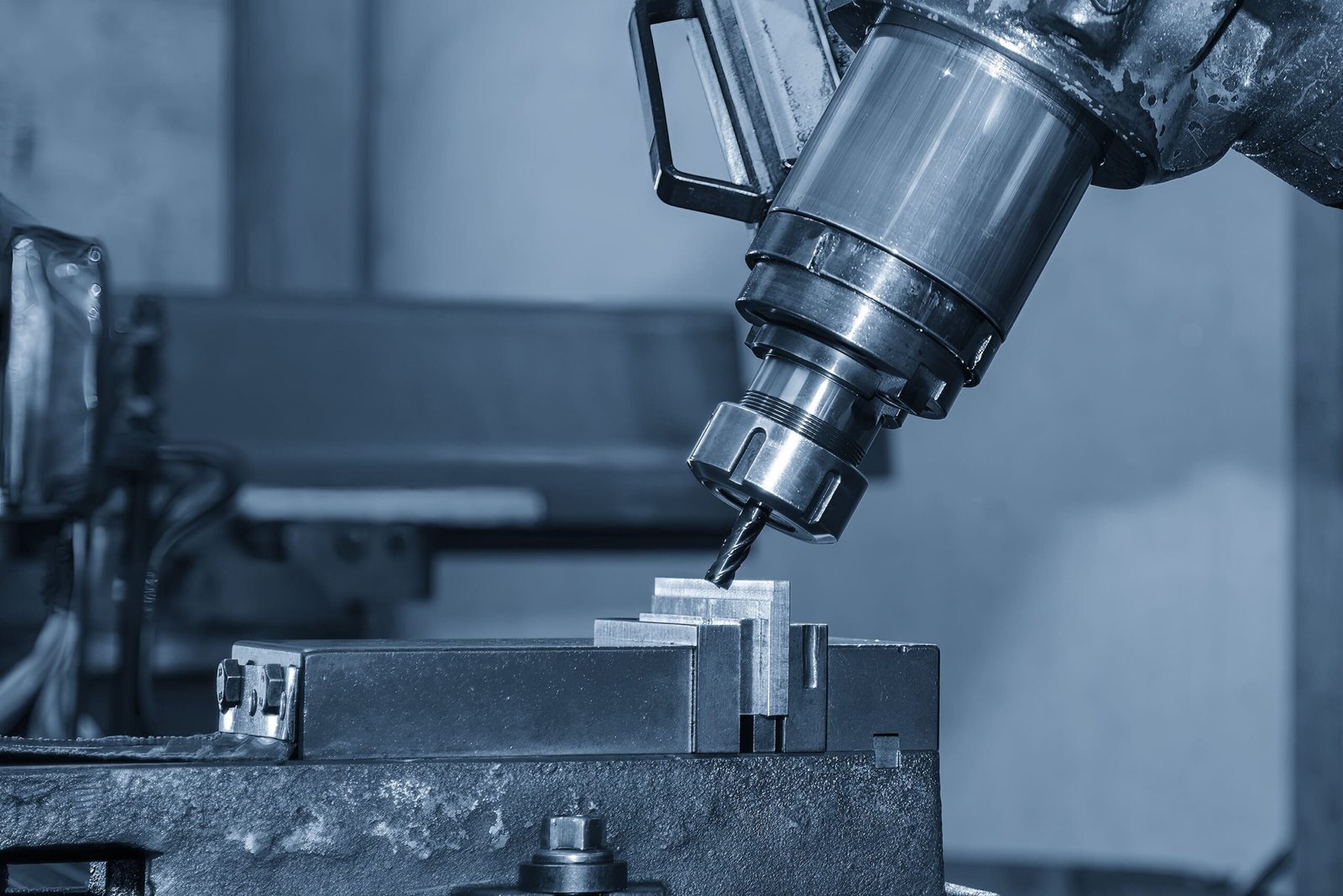
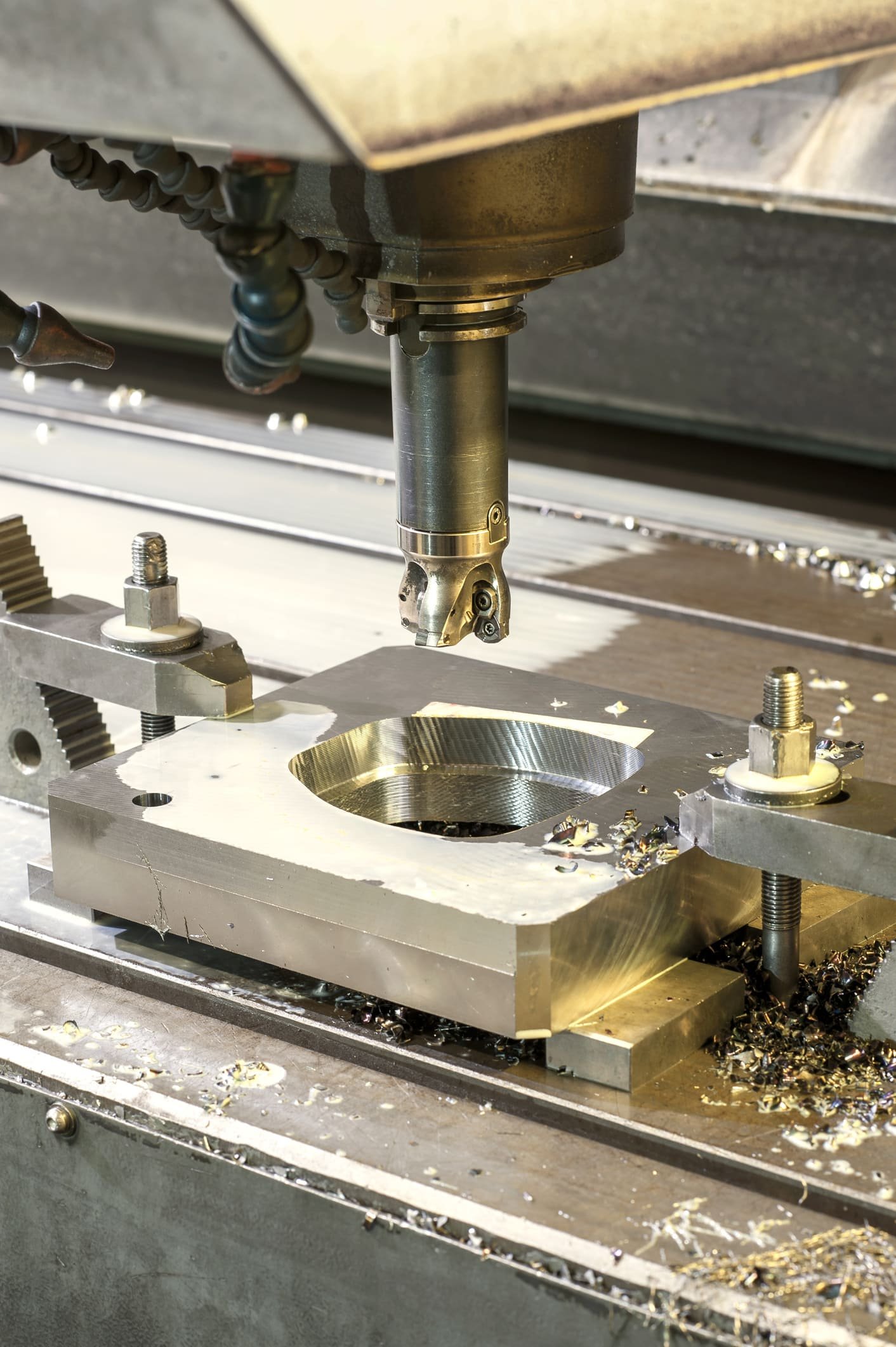
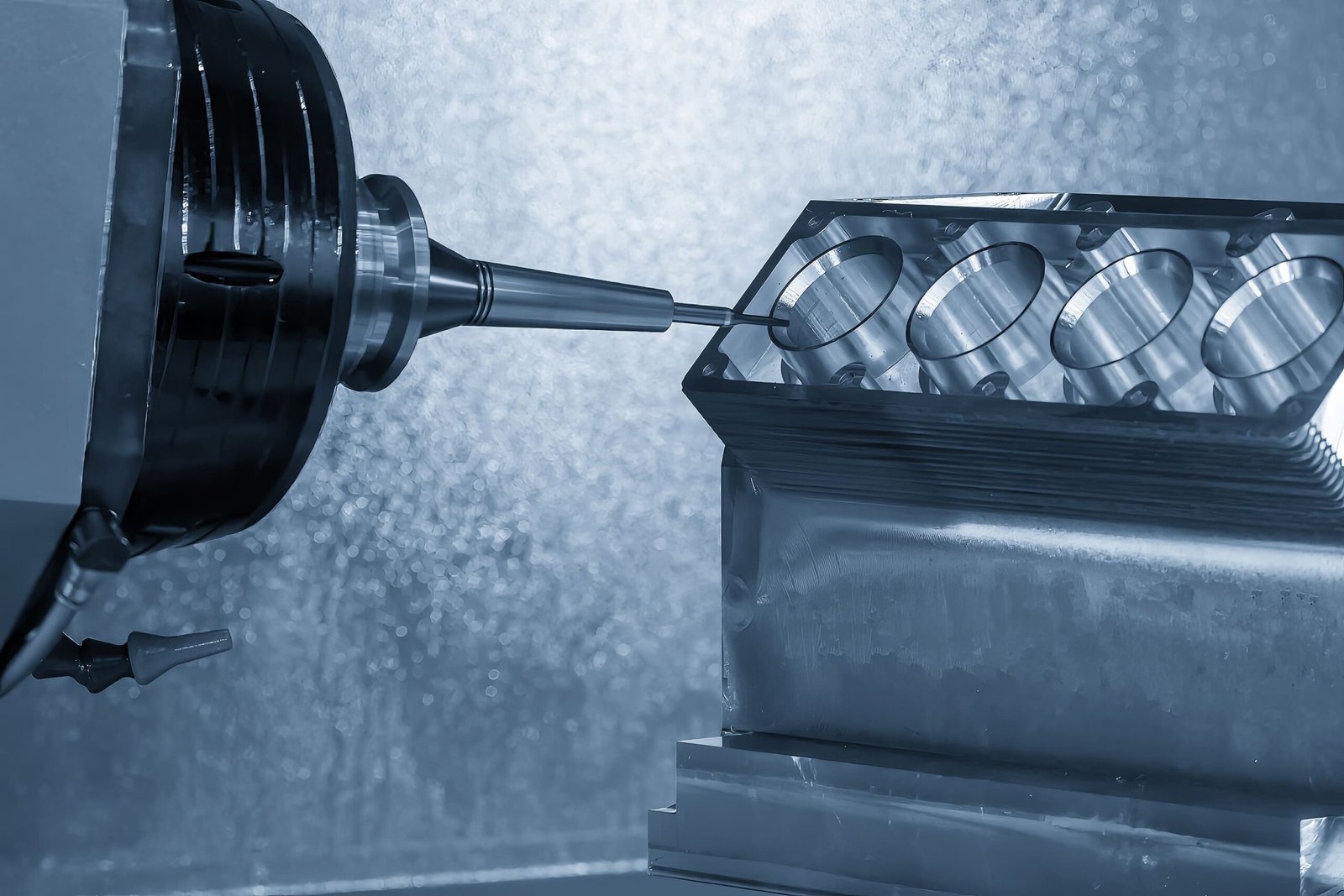
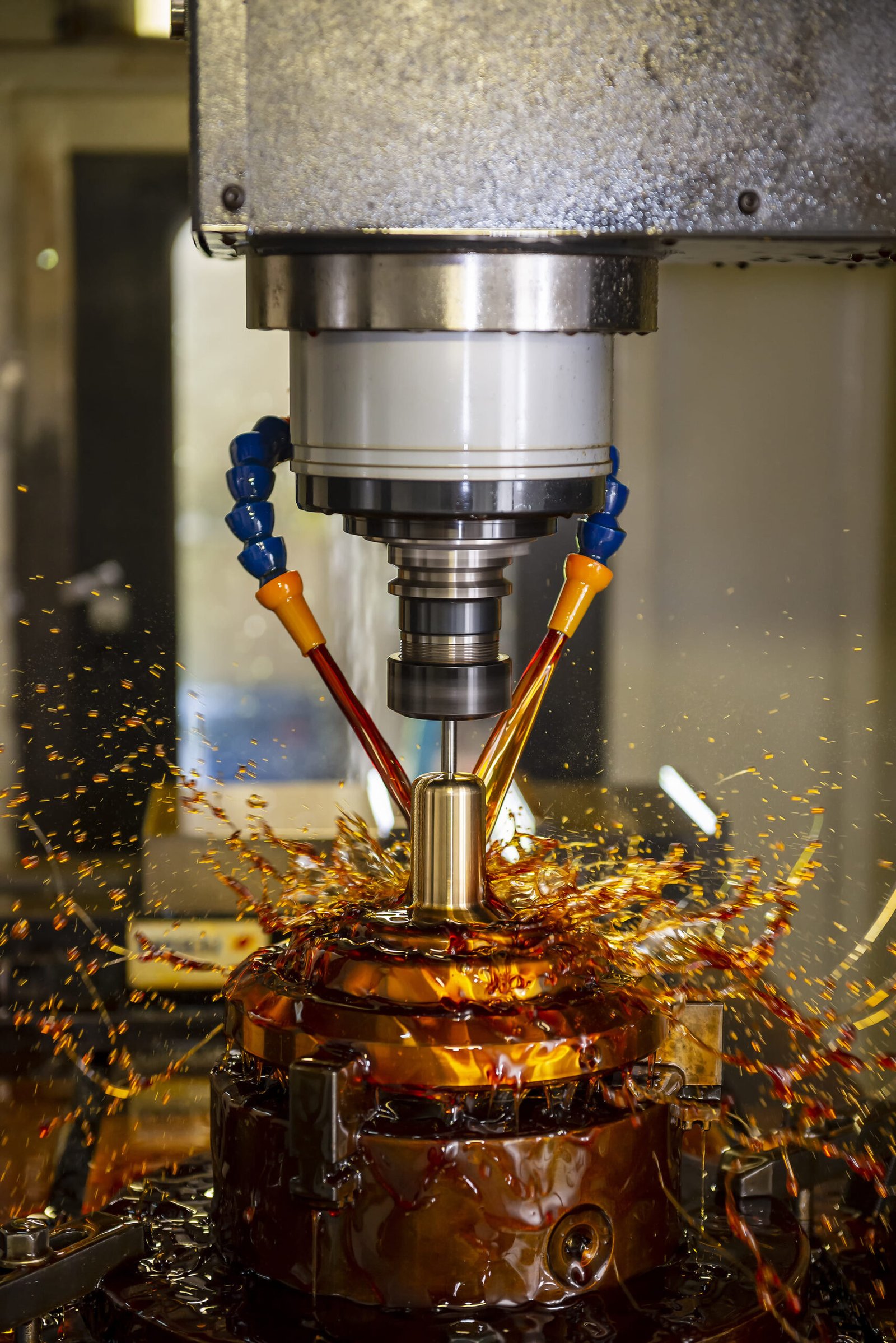


16 افكار عن "ما هو الطحن باستخدام الحاسب الآلي | الدليل النهائي للطحن باستخدام الحاسب الآلي”